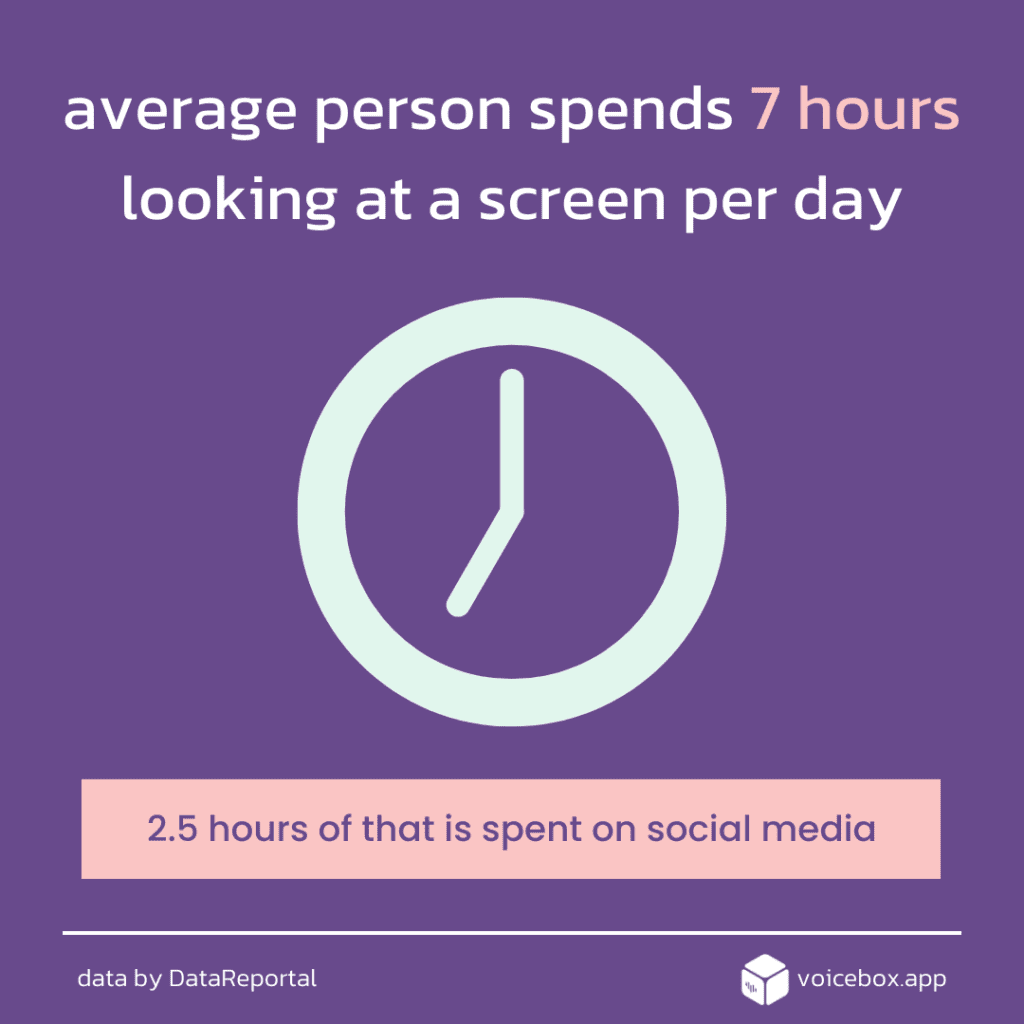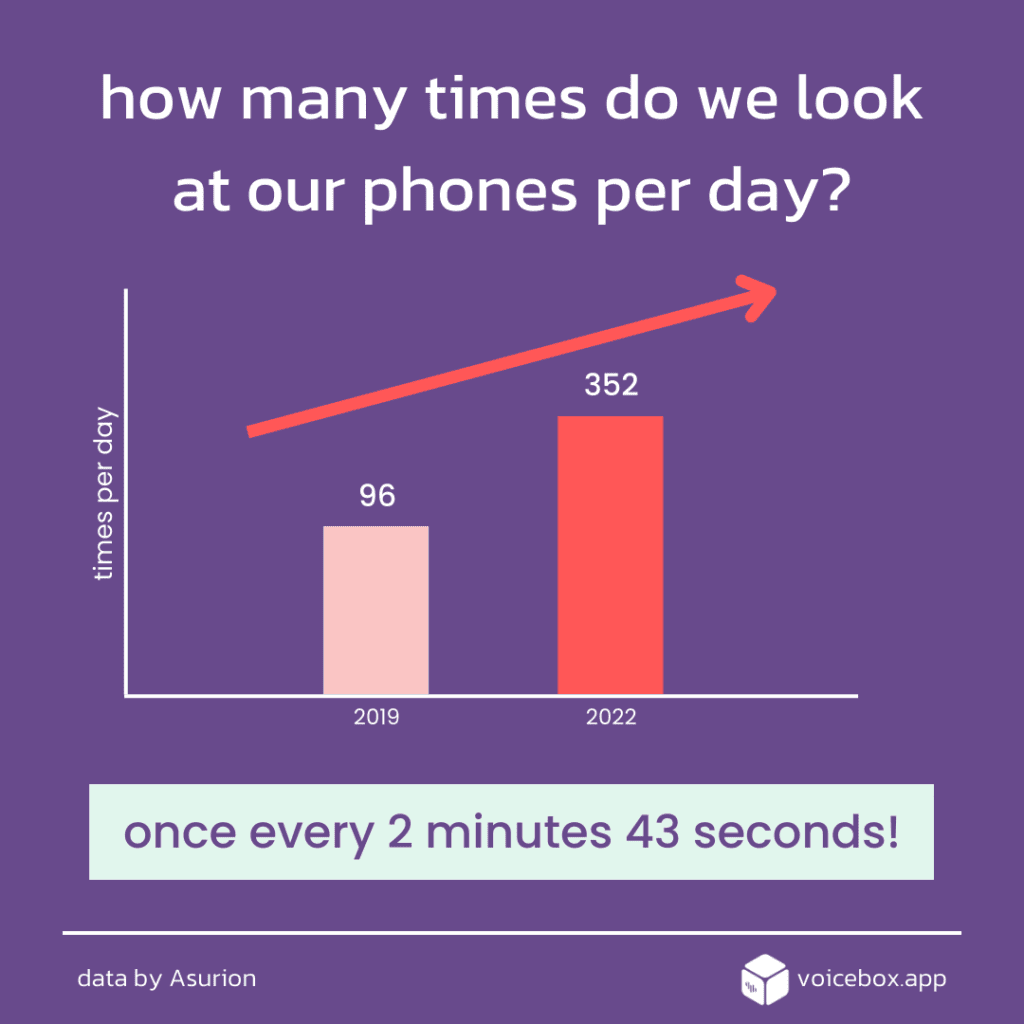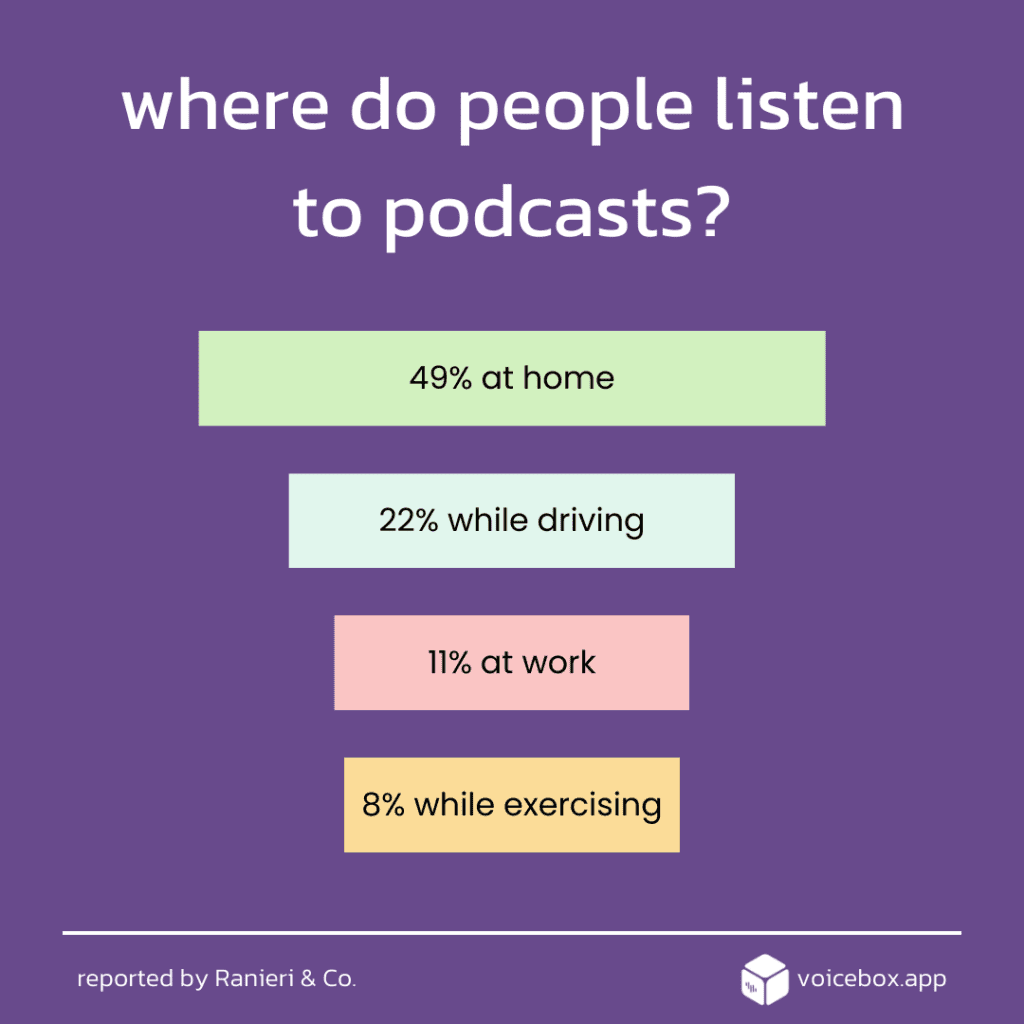Listen to the blog post here.
Social distancing is quite the booger of a phrase. For some, it reminds them of frustrating times when they couldn’t hug their relatives or friends. For others, it meant a temporary reprieve from having to sit in the middle seat on an airplane.
No matter how the phrase makes you feel, there’s no denying that for 1-2 years, social distancing flipped-turned upside down life as we knew it. Even today, there are still some remnants of the time we had to separate. Remote and hybrid work arrangements, improved online shopping experiences, and ample access to hand sanitizers are all benefits we have carried with us as we emerge from the pandemic.
One of the rather large remnants is social media, and specifically, how it boomed during the pandemic. The question is, what does that mean for us moving forward?
Don’t Look Up - What Social Media Apps Don’t Want You to Know
The average person spends about 7 hours looking at a screen per day, with 2.5 hours of that dedicated to social media. It's no shocker, seeing as how a quick glimpse at a few posts can turn into a rabbit hole. Come on, we've all been there. You start by watching a video on some breaking news and end up on a video with a talking cucumber at 3:00 am.
As Dr. Christine Stabler points out, the spontaneous content you come across on social apps can release dopamine, a chemical in your brain released during other pleasurable activities such as sex or eating. In layman's terms, we want more and we can't get enough.

Moreover, having a world of content at your fingertips can make you feel less enthused by the comparatively limited range of possibilities outside your front door, thus perpetuating a cycle that makes you think you’re more satisfied online. These apps literally have a stranglehold on our minds.
Unfortunately, that mindless scrolling takes a bigger toll than just zapping your time. Multiple studies have determined that spending a lot of time on social media can raise your risk for anxiety, depression, loneliness, and suicidal thoughts. Social media does this in various ways.
For one, people tend to share the highlights of their life on social media. This perpetuates a false notion that other people’s lives are so much better than yours and creates feelings of envy or inadequacy.
On the flip side, when you post, you may feel compelled to embellish via filters or hop on the latest trends. However, if you don't receive a high number of likes, your self-esteem may take a hit because you put yourself out there and received little attention for it.
Despite these concerns, social media continues to grow in popularity. A social distancing world further exacerbated the problem. A study by Kantar revealed that social media engagement increased by 61% during the pandemic. Moreover, a study by Asurion found that in 2019, people looked at their phones on average 96 times a day. Flash forward 2 years later and that number skyrocketed to 352. That’s once every 2 minutes and 43 seconds!
The Good and Bad of Social Media
It makes sense that during a time of lockdowns, people would use digital means to inject socialization into their lives. What’s unclear though, is whether the main social media players had a net positive or negative impact on people suffering from isolation and starving for human interaction.
On one hand, social media provided us a way to connect with others under the shared experience of struggling through a global pandemic. Direct messages and apps that facilitate group chats gained major traction during the lockdown to help us stay in touch with friends and family. Memes and viral trends allowed people to laugh together during a time filled with grief. And self-help and DIY tutorials gave people the strength to muscle through the new normal. Some even came out having learned a new trick or two.
On the other hand, social media isn't meant to replace live human interaction. Despite it seeming like a good substitute for the lack of socialization during lockdowns, a study by Dr. Melissa Hunt on Facebook, Snapchat, and Instagram use revealed that social media actually further contributed to feelings of loneliness and depression.
We can attribute the findings of this study to a number of factors prevalent in the most common social media. One reason is you may feel connected to people who aren’t connected to you, such as influencers, viral stars, or anyone you follow who doesn’t follow you back. Another reason is that social media can distort your sense of reality by letting metrics such as likes and shares let you believe that your non-digital life is going smoothly.
Like most things in life, we have to balance the good with the bad. Too much of something can backfire, and social media is no different. Having been around since the beginning of the millennium, researchers have conducted enough studies to prove that overusing social media can negatively impact a person. So how can we build a floor to the rabbit hole that is social media?

What Makes Social Media So Addicting?
Building a floor to the social media rabbit hole comes down to understanding how we consume content. The vast majority of social media apps hinge on some combination of text, images, and video. These platforms bombard our eyes with stimulants. They do everything in their power to keep our eyes absorbing more content through tactics such as recommended videos, showing us what our friends liked, and a never-ending feed that we can swipe through with ease.
And it is very much intended. Tristan Harris, a former Google design ethicist, talks about how features like “pull to refresh” mimic the feeling of pulling the lever on a slot machine. Techniques like these feed phone addiction.
Phone addiction, otherwise known as nomophobia, is accomplished by largely playing on one of our five senses: sight. No doubt that what we hear in a video can grab us and the feeling of swiping to discover new content can be fun, borderline addictive even like playing the slots. But make no mistake. On social media apps, sight is the most powerful sense we have, and thus, the most susceptible to dragging us down the rabbit hole.
In fact, 90% of the information transmitted to our brains is visual. In practice, think about how quickly your eyes can scan a screen for visual cues or to read text versus how slowly your ears hear what is going on. Hearing is subject to the speed of the audio, and audio usually plays in one direction. Your eyes have no such limitations.
A study in 2015 by Microsoft found that the average attention span was 8 seconds. Keep in mind that this was 9 years ago. There’s no telling how much further our attention span has waned, but what’s evident is that 8 seconds of audio isn’t nearly enough to determine the merit of a video. What we see is more likely to dictate if we keep watching or scroll past. This is true for any platform wherein the main method of communication or sharing content is text, image, or video. Social media is a visual world, and therein lies our problem. Therein too, lies a solution.
Fighting Phone Addiction with Touchless Social
In social media, audio still plays second-fiddle to big brother visual, but that’s what leads me to believe in its potential. I would ask you to imagine the possibilities of transitioning our social media from sight to sound, but you don’t have to imagine too hard. The proof of concept is in how we engage with music apps and podcast players. We do so hands-free, without looking at our phones.
Now ask yourself, what if there was a way to enjoy social media without looking at your screen? Where you can catch people's experiences, their sentiments, or the latest news with your ears instead of your eyes. Where you get everything you love about social media but without the phone addiction. That’s what I mean by touchless social. We pull ourselves away from our phones, but maintain digital socialization.
Touchless social is the social distancing equivalent in the world of social media. By touchless social, I don’t mean that we cut social media out of our lives cold turkey. Its benefits are too powerful to ignore. Instead, let’s take a page from the playbook of how people socialized when lockdowns ended but social distancing was still common practice. That was a time when people still got together but sat further apart, ate outdoors instead of inside a restaurant, and took walks in nature instead of going to crowded clubs.
Social distancing measures made public gatherings feel safer from the ill effects of a novel virus. Likewise, touchless social can bolster our defenses from the ill effects of social media. It answers the question of “how can I look at my phone less?”
The Benefits of Touchless Social
Benefit 1: Touchless Social Allows for Multitasking
If your phone isn’t in your hands, then time is. This is abundantly seen in practice with other audio-based apps. For example, Ranieri and Co. reported a recent study on podcast listening habits which showed:
- 49% of listening happens at home
- 22% while driving
- 11% at work
- 8% while exercising
Even the 49% at home may not necessarily stare at their screens while they listen. They could be doing chores, working, cooking, or anything else that allows them to listen to a podcast in the background. These listeners can engage with content hands-free, allowing them to do other things.
Unfortunately, people play it risky when it comes to social media. Opening social media on your phone while driving is something no social media CEO would recommend (I hope), yet a 2015 study by AT&T revealed that 40% of smartphone users do exactly that. For whatever reason, 2015 was a popular year for studies, and there is a chance that this has gotten worse over the years.
I could take this analysis to its extreme conclusion and say that touchless social prevents car wrecks and save lives, but I’ll leave it at this. Audio-based social media empowers us with the ability to multitask while staying connected.

Benefit 2: Touchless Social Means Less Screen Time
While this may sound similar to the point above, the distinction is about the benefits our eyes receive when not glued to a screen. People gravitate to this idea. Spotify found that one in three people tune into podcasts because they are screenless.
The screenless aspect may be alluring for the ability to multitask, but it helps your eye health as well. UAB Medicine estimates that nearly 60% of Americans suffer from DES. That’s digital eye strain (you know when it has an acronym that it must be legit). The Kraff Eye Institute points out that mobile phone eye strain can cause dry eyes, irritation, throbbing headaches around the eyes, and blurred vision.
Moreover, as many of us may be painfully aware, using your phone as you lay in bed is a surefire way to disrupt your sleep. This is due to how the light of your screen disrupts your circadian rhythm, as explained by The Sleep Doctor. While tactics such as blue light filters, eyedrops, and even remembering to blink often can cushion the strain on your eyes, they are no substitute for looking away from the screen. Touchless social reduces the strain we put on our eyes.
Benefit 3: Touchless Social Creates More Meaningful Engagement
I elaborated on this point in more detail in my earlier post here, but the idea is that voice has time and again been a way for people to make various technologies seem more human. Think about Alexa, Siri, or those automated customer service prompts.
By extension, we can surmise that engaging with others through the humanness of voice is more meaningful and thought-provoking compared to sight. Let’s be honest. Sight lends itself to superficial cues. While our eyes can scan every direction in a matter of seconds, audio content has to be heard to assess it. This gives us more time to truly process what we’re sensing.
Sure enough, that same Spotify study found that 81% of listeners have taken action after hearing ads during a podcast, such as researching the product and talking about it with others. Ironic how touchless social can touch us the most.
How Voicebox Leads the Touchless Social Effort
Touchless social is best achieved through a social media app that hinges on sound instead of sight. As luck would have it, Voicebox is an audio-first social media platform! This doesn’t mean Voicebox is an audio-only experience; contrary to it. On Voicebox, you can supplement your voice posts with other forms of media, but that’s what they are. Supplements. The primary means of engagement is one person’s voice to other people’s ears. Just hit play then go about your day as you enjoy your favorite people’s voices sharing moments of their lives, entertaining you with their art and comedy, informing you of the latest news, and other aims of social media accomplished in a hands-free way.
The goal of touchless social is simple: allow people to be social while maintaining a healthy distance from their phones. Autoplay is a great way to start this mission, but Voicebox continues to research and develop ways to further make the platform more hands-free, more convenient, more meaningful, and better for our overall well-being. I can’t wait to share with you all what we have in store on the touchless social front.
Social media is its own kind of pandemic. It spreads at an exponential rate and has a variety of apps popping up all the time like new strains. While not deadly like a virus, it’s not completely harmless either. We learned during the COVID-19 pandemic to take means such as social distancing to protect ourselves. The same goes for social media.
One day, future teachers will tell their class about a time when students couldn’t sit next to each other. Parents will tell their kids of a time when they couldn’t hug their friends. Future generations may not be able to fully grasp what it meant to socially distance, but by then, let’s hope that touchless social is the new normal.
Sunday Blog is a series where we discuss the many facets and functions of the human voice.

